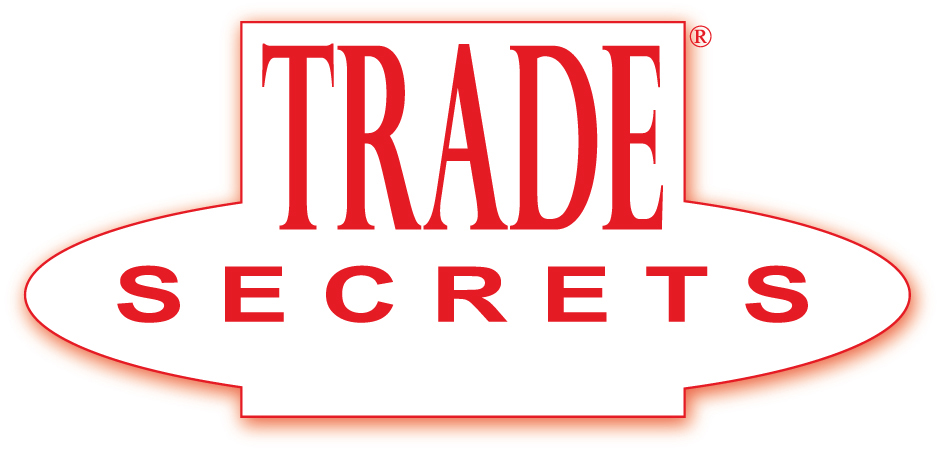
Trade Secrets 101
© 2009, Gallagher & Dawsey Co., LPA
April 2009
Trade secrets provide protection against the misappropriation of undisclosed information which has economic value and which the owner has taken reasonable steps to protect from disclosure. In the United States, trade secrets are protected under state laws. Because they are regulated under state and not federal law, trade secrets laws vary from state to state, and it is difficult to make absolute generalizations about all state laws. Unlike patents, copyrights or trademarks, trade secrets are not publicly recognized or registered with the government. However, trade secrets may be more valuable than all of the company’s patents, copyrights and trademarks combined.
Trade secrets consist of information and can include a formula, pattern, compilation, program, device, method, technique or process. To meet the most common definition of a trade secret, it must be used in business, and give an opportunity to obtain an economic advantage over competitors. There are several factors used to determine if subject matter qualifies as a trade secret.
Each of four elements must be present in a trade secret:
A trade secret must consist of information. The most common examples fall under two categories: technical information and business information.
The information must derive actual or potential economic value from the fact that it is secret.
The information cannot be generally known either by the public, or, more importantly, by competitors or industry colleagues.
The information must be treated as a secret, and the subject of reasonable efforts to maintain its secrecy. The owner’s desire or intent to keep the information a secret is not enough.
Most trade secrets fall into two broad categories: technical information and business information.
Technical Information
Plans, designs and patterns, such as those for specialized equipment;
Processes and formulas, such as those for the manufacture of drugs, foods, chemicals or other materials (e.g., the formula for Coca-Cola);
Methods for techniques for manufacturing;
Engineering notebooks;
Negative information, e.g., the designs that didn’t work (the UTSA definition of a trade secret “including information that has commercial value from a negative viewpoint, for example the results of length and expensive research which proves that a certain process will not work could be of great value to a competitor”;
Computer software (programs or source code).
Business Information
Financial information prior to public release
Cost and pricing information
Manufacturing information
Internal market analysis or forecasts
Customer lists
Unannounced business relationship one is negotiating or has entered into
Information about business opportunities such as opportunities to acquire another company or product
Marketing and advertising plans, both for existing and planned products
Personnel information (e.g., who the key employees are, what are the compensation plans for key employees who would be a good target to hire away because of his or her special knowledge, experience, receptivity to solicitation and the like).
Trade secret owners have a duty to use ‘reasonable measures’ to safeguard their secrecy. A common reasonable measure involves putting employees, contractors, vendors and other personnel on notice of the existence and nature of confidential information and of a contractual duty on their part not to disclose it. Companies may include confidentiality provisions in the form of contracts, offer letters, requests for bids and other appropriate documents.
Giving workers (both employees and contractors) guidelines as to what sort of information the company considers confidential and how that information should be treated is vital in the protection of trade secrets. Requiring them to sign non-disclosure agreements and placing warning labels on confidential documents and computer login screens can be ways in which trade secrets can be generally protected.
In pursuing business opportunities, disclosures of trade secret information should occur under a license or non-disclosure agreement (itself a confidential document) that describes the information that is being disclosed; states the purpose(s) for the disclosure and the permitted exclusive use(s) of the information; and reiterates the other party’s obligation to maintain the secrecy of the information. Vendors, suppliers, and independent contracting organizations or subcontractors should sign non-disclosure agreements at the inception of any relationship.
If an agreement is not possible, the trade secret owner should at least make clear its expectation that information is treated as confidential.
You may find it necessary to take additional steps with respect to specific kinds of information, such as limiting or monitoring the copying of documents or data in particular departments, prohibiting the removal or distribution of certain kinds of documents outside of a specific location, or prohibiting or limiting an employee from copying or working on company materials on their home computers.
What is Misappropriation?
Misappropriation does not need to be a deliberate act; it can occur through negligence or even mistake. “Misappropriation” is a statutory term that defines what one may not do with the trade secrets of others.
Misappropriation means:
Acquisition of a trade secret of another by a person who knows or has reason to know that the trade secret was acquired by improper means; or
Disclosure or use of a trade secret of another without express or implied consent by a person who:
a. Used improper means to acquire knowledge of the trade secret; and b. At the time of disclosure or use, knew or had reason to know that his or her knowledge of the trade secret was:
i. Derived from or through a person who had utilized improper means to acquire it;
ii. Acquired under circumstances giving rise to a duty to maintain its secrecy or limit its use; and
iii. Derived form or though a person who owed a duty to the person seeking relief to maintain its secrecy or limit its use; or
c. Before a material change of his or her position, knew or had reason to know that it was a trade secret and that knowledge of it had been acquired by accident or mistake.
This definition of misappropriation can be broken down into three types of prohibited conduct: (i) wrong acquisition; (2) wrongful use; and (3) wrongful disclosure of someone else’s trade secret. A common thread tying all of these concepts together is “improper means”.
Loss of Rights
Trade secret status may be lost over time. New technology developed today may become generally known and quite common in as short as six months. After previously secret business information (such as bids, prices or demand data) is released or otherwise becomes generally known, it loses any trade secret protection that it might have enjoyed.
Trade secret rights can also be lost through publication of the information, including the posting of confidential information via the Internet or intranets. Anonymous postings, even if available for only a very short period of time, can destroy trade secret status because millions of people could have accessed the information even if few people in fact saw it.
